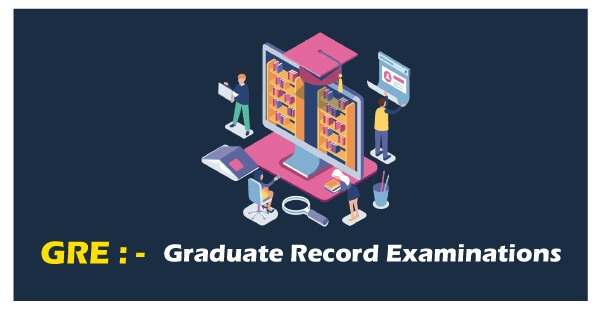GRE Full Form
GRE Full Form
GRE stands for Graduate Record Examination. It is a standardized test to take admission in graduate schools in the United States, Canada, United Kingdom and some other countries. In general the test is computer-based, but in the areas with no internet facility, a paper- based test can be given. Graduate Record Examination is developed and administered by ETS (education testing service).
Further, the Graduate Record Examination test was started in 1936, by the deans of four IVY League Universities and the Carnegie Foundation for the advancement of teaching. However, the first Universities which did the experiment of this test were Columbia University, Harvard University, Princeton University and Yale University. The first Public University which took the GRE test (in 1938) was Wisconsin University. Carnegie Foundation administered the project of GRE until the establishment of Educational Testing Service (ETS) in January 1948.

The purpose of the GRE test is to get admission for Master’s degree and the Doctoral degree programs in various Universities. The time duration for the examination is about 3 hours and 45 minutes (includes 1-minute breaks after each section and a 10-minute break after the third section). The computer- based test is held multiple times in a year (depending on the availability of the test center), whereas paper-based tests are held up to 3 times in a year (October, November and February). The validity of the score/grade is five (5) years. The number of test centers is about 1000 in more than 160 countries and the language for the examination is English.
Further, the computer based examination of the GRE test consists of six sections. The first section is the Analytical Writing Section and the next five sections consist of two Verbal Reasoning Sections, two Quantitative Reasoning Sections and the last one is either an Experimental or a Research Section. However the score of the Experimental Section does not count in the final score but the section is mandatory for examination. Now, the paper-based test also consists of six sections. Here, the Analytical Writing is split up into two sections, and another four sections consist of two Verbal and two Quantitative Sections. In this format of paper there is no Experimental Section.
- Analytical Writing Section: In this section there are two different essays, the first one is an “issue task” and the second one is an “argument task”. In the issue task 30 minutes is given to write an essay about a selected topic, which is selected from a pool of questions, published by GRE in its entirety.
In an argument task an argument is given, that may be a series of facts and consideration leading to a conclusion, on which the candidate is asked to write an essay critically, in an argumentative way. The timing for this task is also 30 minutes and the topic is also selected from a pool of topics published by GRE in its entirety. This section is graded on a scale of 0-6, in half-point increments.
- Verbal Section: In this section there is reading comprehension, critical reasoning, and vocabulary usage. Each verbal section consists of 20 questions of 6 text completion, 4 sentence equivalence, and 10 critical reading questions. The allotted time for this section is 30 minutes. However in 2011, text completion replaced sentence completion with a new reading question having selection of multiple answers. The test score is on the scale of 130-170, in 1-point increments.
- Quantitative Section: This section is based on the basis of high school level mathematics and reasoning. Here each section consists of 20 questions, 8 quantitative comparisons, 9 problem solving and 3 data interpretation questions. The given time for completing the question is 35 minutes. However in 2011, there were some changes in question types like; addition of numeric entry to fill in the blanks as well as the multiple choice questions. The score scale for this section is 130-170, in 1-point increments.
- Experimental Section: This section can be either verbal or quantitative. Since the score of this section does not count in the final score, but due to being unidentified, students have to focus on every section.
Apart from these general tests, there is also a subject test. The subjects for the subjective test include: Physics, Chemistry, Biology, Mathematics, Psychology and Literature in English. Time allotted for each test is 170 minutes. However, before 2016 there were many subjects from all areas, but gradually they were discontinued. And now there are only six subjects for the GRE subject test.
Now, several resources are available for the GRE examination. These sources are given by ETS itself like: Preparation Software called PowerPrep (this contains two practice tests with past and new questions and review material). The second one is “Big Book” published by ETS. In addition, other companies also provide courses, books and other materials for preparation. Students also use University Text Books, GRE preparation books, sample tests and free web resources for examination material.
The testing locations for the general and subject tests of Graduate Record Examination are Undergraduate Institutions, while for the computer-based test there are over 1000 locations, having appropriate technological accommodations.
Moreover, there are several critics who criticized the different aspects of the GRE test. But, ETS always takes necessary steps to maintain the level of examination; when in 1994, the scoring algorithm for the computer- adaptive form of the GRE was discovered insecure, to preserve the integrity of scores, ETS revised its scoring and used a more sophisticated scoring algorithm.